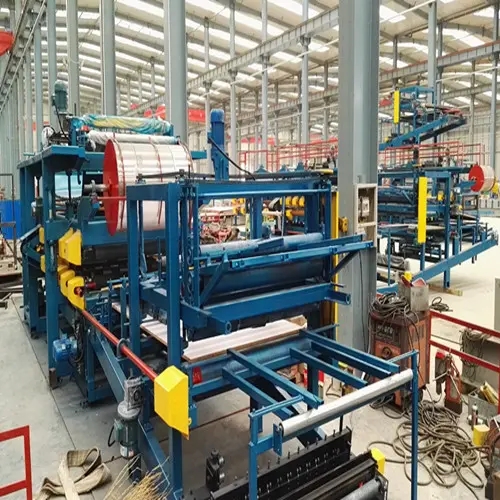
The Evolution and Importance of Metal Ceiling Systems
In recent years, the construction and renovation industries have increasingly favored metal ceiling systems for their durability, aesthetic appeal, and versatility. A key component of these systems is the metal components that ensure stability and functionality. This article will delve into these components, including metal ceiling studs, tracks, drywall, C-channels, main channels, and wall angle roll forming machines, highlighting their significance in modern construction.
Metal ceiling studs and tracks form the backbone of suspended ceiling systems. Unlike traditional wooden structures, metal studs provide greater stability and resistance to various environmental factors, such as moisture and pests. These characteristics make metal an ideal material for use in environments like hospitals, schools, and commercial spaces where longevity and hygiene are paramount. The metal tracks provide a framework for the installation of drywall and other ceiling materials, ensuring that they are securely anchored and level.
Drywall, commonly used in these systems, is a materials blend consisting mainly of gypsum plaster pressed between two sheets of thick paper. Its lightweight nature combined with the robust support of metal studs facilitates easier installation and lowers transportation costs. Moreover, drywall is inherently fire-resistant, making it an attractive option for commercial buildings that need to adhere to strict safety regulations. When combined with metal ceiling structures, drywall creates a finished look that is both modern and functional.

C-channels, essential components in metal ceiling systems, are rolled steel products that are shaped in a ‘C’ configuration. They serve to support the ceiling while allowing for easy installation of fixtures, insulation, and other utilities. C-channels reinforce the integrity of the structure, providing a connection between the ceiling and the walls. This connection is critical in ensuring the soundness of the ceiling system and helps to prevent sagging or warping over time.
Main channels, also known as main runners, serve as primary support within the ceiling grid structure. They distribute weight evenly across the ceiling, providing the necessary support for panels and tiles. The proper installation of main channels is crucial for achieving a level ceiling, an important factor in the aesthetics of any space. The integration of main channels with other components, such as wall angles and C-channels, ensures a cohesive and stable design.
Wall angle roll forming machines play an essential role in the above-mentioned processes. These machines are used to manufacture wall angles, which serve as the perimeter support for ceiling panels. A roll forming machine efficiently creates consistent and precise angles that are integral to the entire ceiling structure. The automation and precision offered by these machines not only speed up the manufacturing process but also enhance the quality of the final product.
In conclusion, the advancing technologies and robust materials employed in metal ceiling systems, from metal studs and drywall to roll forming machines, underline the importance of innovation in construction. As architects and builders continue to seek durable, efficient, and aesthetically pleasing designs, the role of these components will only grow. Understanding their functions and interconnections can help both professionals and DIY enthusiasts achieve outstanding results in their projects. The future of ceiling systems looks promising, driven by advancements in materials and technology that promise even better solutions in the years to come.